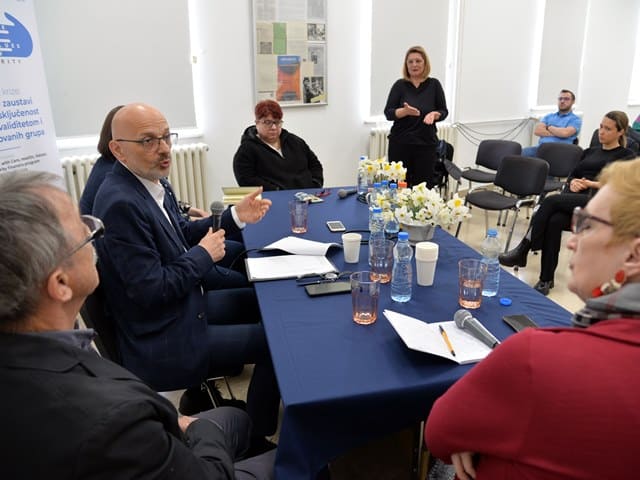The second panel of the round table “Lessons form the crisis: How can the social exclusion of old people with disabilities and marginalized groups be stoped” was related to accessibility of cultural content to people with disabilities and marginalized groups.
Prof. Dr. Zoran Pavlović, Provincial Ombudsman, pointed out that the emergency situation in 2014 was not a sufficient lesson for us to wake up and realize that it is time to go a step further in this new reality. "For the last ten years, I have seen a wide range of human rights in all spheres of social life and work, but also the constant inaccessibility of that range in the field of culture, in the field of practicing human rights for all in an accessible way," said the provincial ombudsman. As he said, we look at various ways to exercise basic rights through the prism of abuse. According to him, architectural barriers, which used to be synonymous for the people with disabilities, are now less and less a kind of obstacle for them. It is necessary to observe things not from our own shoes, but to reach common solutions through dialogue, Pavlović pointed out.
Psychologist Tatjana Stojšić Petković pointed out fear as a problem that is being kept silent. "You have to have something that gives you the joy of life, if you don't, that fear will find a way out. Television, newspapers, social networks fuel that fear, "said Stojšić Petković.
Mirko Knežević, a representative of the Deaf community, pointed out that not much has been done in the field of accessibility of cultural content. He believes that it is not available to deaf people due to the lack of sign language interpreters, so subtitled theater plays mean nothing to them.
As a positive example is the Matica Srpska Gallery, which adapts it‘s contents to people with disabilities. Ivana Rastović, curator of the gallery, believes that museum contents must be available to the general public. "Our gallery is visited by a diverse audience, with different interests, and it is important to think about how the content will be created." Also, according to her, isolation has led us to think more about the elderly people that live in nursing homes, who are not able to visit cultural institutions. "That's why we plan to visit people who are physically unable to visit our gallery."
Marijana Ramić Vulin, from the Novi Sad European Capital of Culture 2022 Foundation sees two problems: why aren't people with disabilities in the audience and why aren't they creators of cultural content? As she said, the Foundation considers this topic extremely important and announced as a contribution that in October it will dedicate itself to the topic of inclusion, through the inclusion of marginalized people in culture.
The participants in the discussion summarized that it is necessary to improve the accessibility to cultural content for people with disabilities, their participation in the creation of such content, as well as the implementation of joint actions.
